Photosynthesis
Read Pages 85-89
Sunlight is a form of electromagnetic radiation, transmitted as waves.
Sunlight is a mixture of all colors of light. Each color of light has a different
wavelength, and thus a different amount of energy (see Fig 5-12).


Blue light has more energy than red light (its faster for a
small wave to move than a long wave----think of jumping rope!)
When an object reflects a color, that is the color it appears.
Blue book reflects blue. All other colors are absorbed.
Green leaf reflects ____?____. All other colors absorbed.
Plant cells have chloroplasts (the organelle where photosynthesis occurs).
The chlorophyll in chloroplasts reflect green light, mostly uses blue and red
colors.
Chlorophyll is a special pigment (molecule that absorbs light)---it takes
energy from light, and energizes electrons.
Think of plant pigments as being like TV antennas. Each type of pigment absorbs
and uses a different wavelength of light (just as antennas pick up different
stations). All the pigments are linked together, to give the energy they pick
up to then energize electrons.
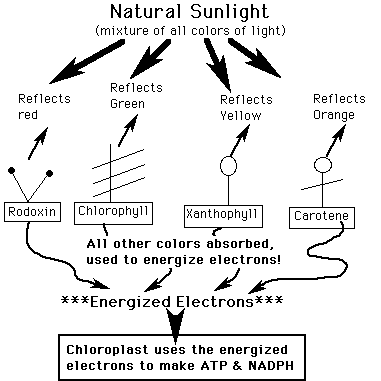
Overall Reaction Equation for Photosynthesis (memorize):

In reality, this equation takes place in many steps.
3 Main Stages of Photosynthesis:
1. Capturing light energy- involves chlorophyll on thylakoid
membranes (See Fig. 5-13).
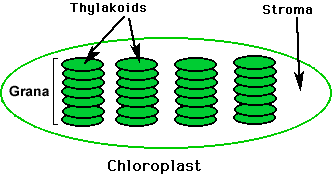
Electrons energized. They leave the chlorophyll & travel
on the thylakoid membrane. Water is split to provide more electrons. Oxygen
is released to the air. Hydrogen ions used for next step.
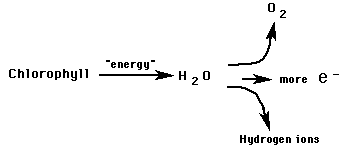
2. Using the energized electrons to make ATP and NADPH (See
Fig. 5-14).
a. Hydrogen ions pass through protein pumps on thylakoid &
give electron energy to make ATP.
b. Extra energized electrons used to make NADPH. The NADPH carries
the energized electron & hydrogen (from water) to where the sugar is made.
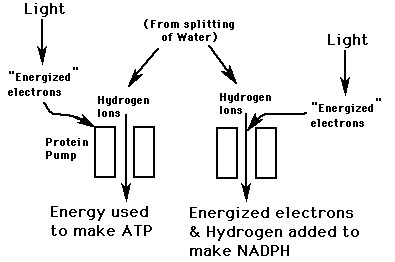
STEP #3. Named Calvin Cycle. This step builds carbohydrates
(See Fig. 5-15). Occurs in stroma. This step doesn't need light.
a. NADPH & ATP diffuse to stroma.
b. CO2 enters cycle. ATP adds energy to CO2. NADPH adds energized
electron & hydrogen to the CO2.
c. After many steps, CO2 converted to CH2O.
d. Calvin cycle repeats 6 times to make glucose ( C6H12O6 ).
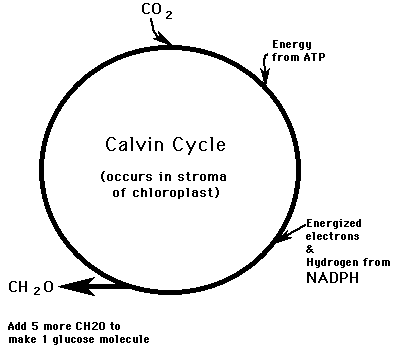
Paul Slichter






